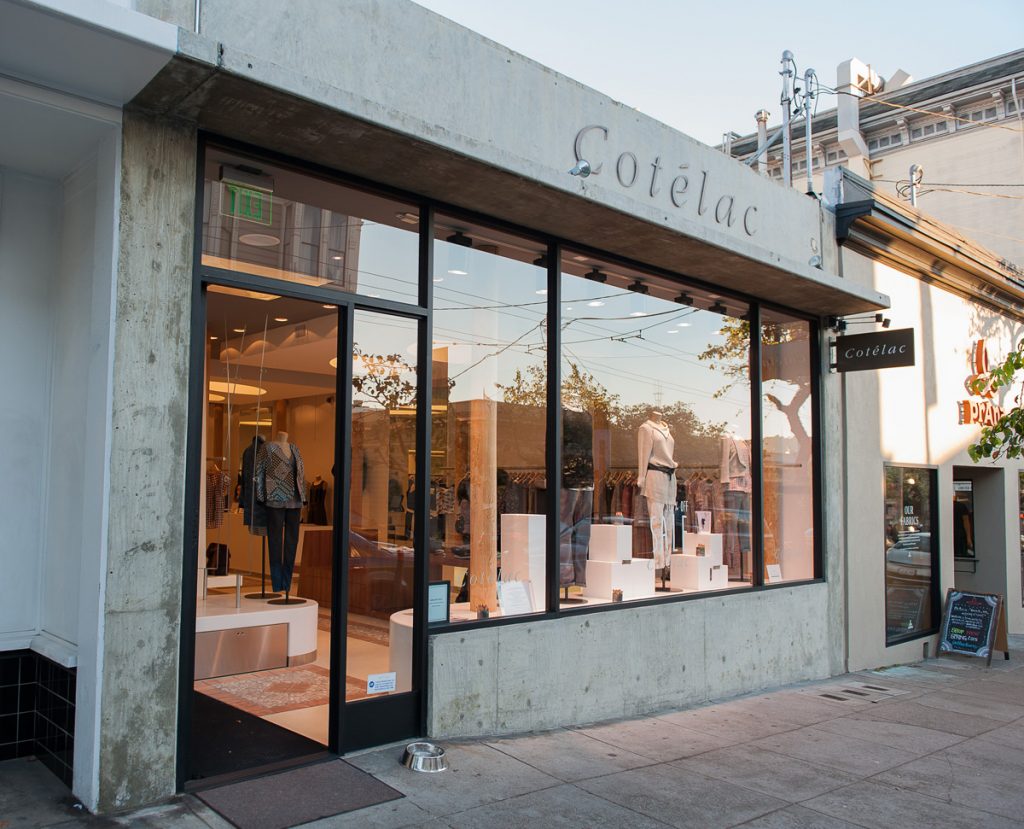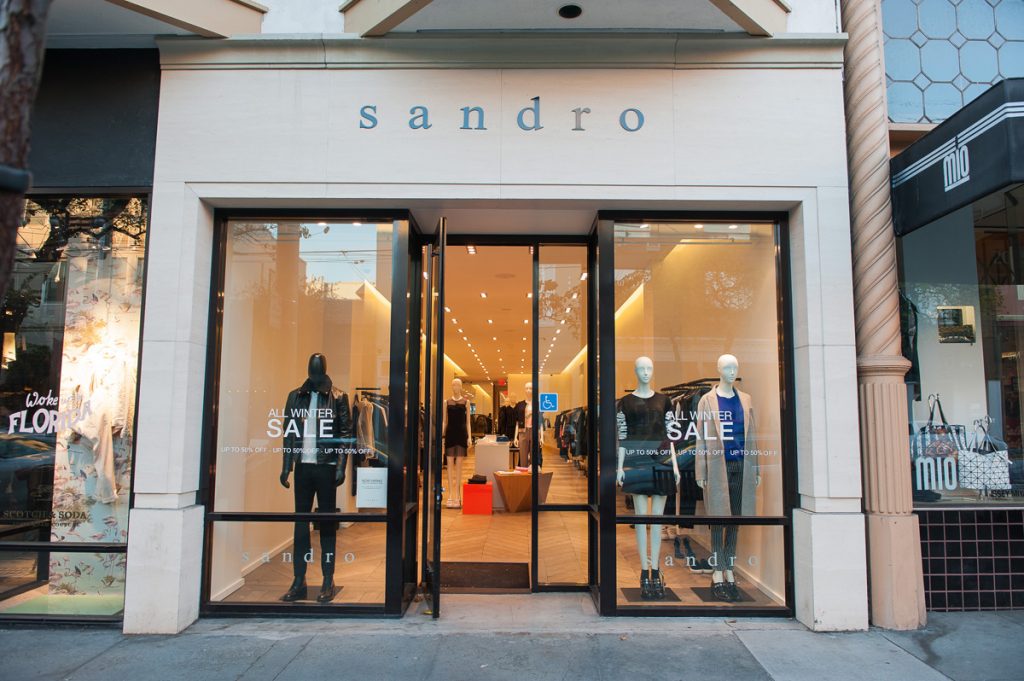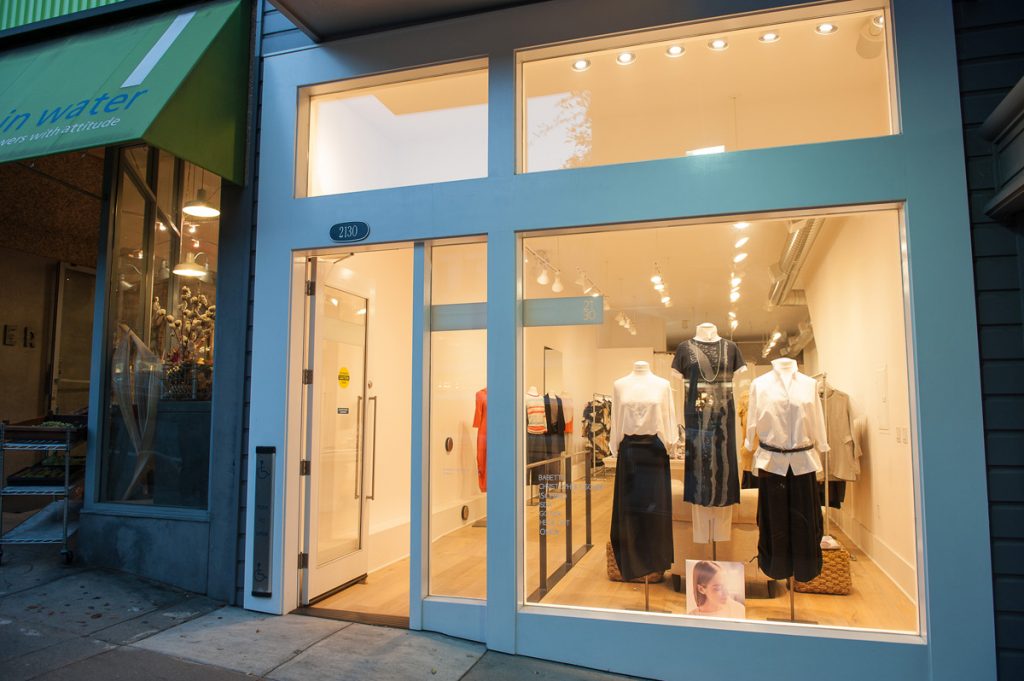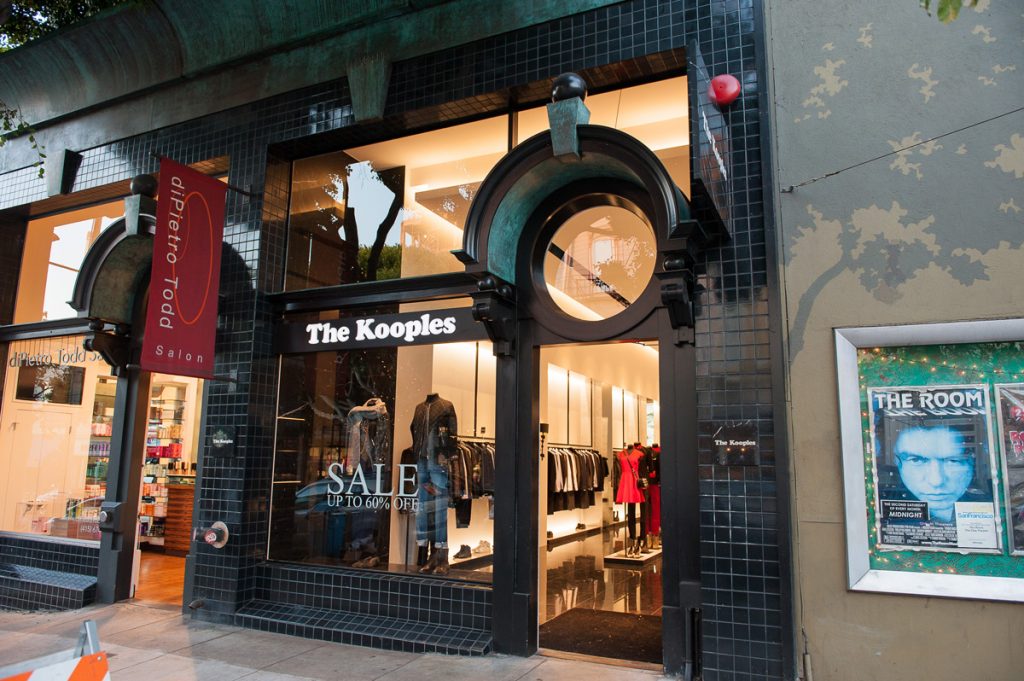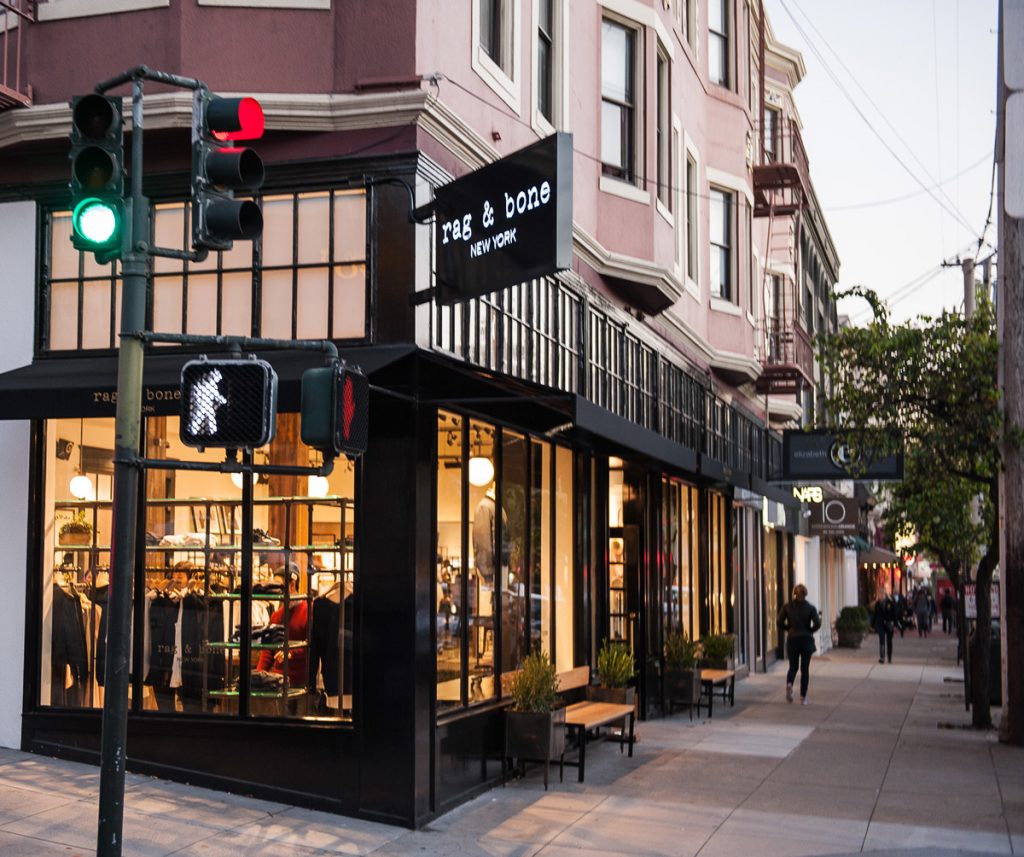
The new Rag & Bone boutique at Fillmore and California, formerly a coffee shop-laundromat. Photographs by Daniel Bahmani
RETAIL REPORT | BARBARA KATE REPA
I t’s impossible to ignore the cries and whispers: Fillmore, long loved and lauded by locals, has been transformed from a neighborhood street serving residents who live nearby into a high fashion shopping destination.
In recent years, two dozen new clothing boutiques have set up shop on the street, most offering single lines with corporate roots and identities. They have renovated aging storefronts, many of which needed attention, into chic new showplaces for their brands.
But one key element seems to be missing: shoppers. Most of the stylish new shops are empty much of the time, except for sales associates checking their cell phones and security guards stationed at the front doors. And very few shopping bags are in evidence on the street.
During recent weekday wanderings up and down Fillmore Street, salespeople outnumbered shoppers in nearly every new boutique — despite the window signs promising sales inside, some up to half off and more. On weekends the sidewalks fill, but most people gravitate to the make-up stores and restaurants. Forays into the fashion shops tend to be quick, with most browsers leaving empty-handed.
“The shops have become showrooms,” says Lisa Arita, who lives in the neighborhood and worked in retail on the street for decades. She was recently pitching in at Mio, one of the few remaining local independent shops, while the owner was in Paris on a buying trip.
“People might come in and look at the stores here, but if they see something they want, they’ll try to find a deal online — or look for it in a department store that might be offering it on sale,” she says.
In the past, many of these high-end boutiques would have located near Union Square and the major department stores, cashing in on the high volume of shoppers and tourists.
Miyo Ota, who has owned and operated the Mio boutique at 2035 Fillmore for three decades, says that’s still a better place for them. “These mono label stores would fare better in Union Square where there is a density of more international and domestic travelers in and out daily,” she says.
But David Fishbein, a broker with the Runyon real estate group in Los Angeles, who has brought many of the high-end boutiques to the street, says that has changed.
“There are a lot of merchants who can’t afford Union Square and many more that just prefer to be in a charming neighborhood,” he says. “When choosing a location, most will look at the demographics — who’s living and working in the neighborhood. And they’re really interested in the other types of brands and restaurants already on the street.”
Fishbein says that while all retailers seek a vibrant neighborhood that is busy seven days a week, mono brands are a bit more difficult to peg. “It varies with the brand and the merchant,” he says. “Some like the idea of having strength in numbers. Others like Fillmore because it’s an eclectic mix — a combination of local independent merchants and big name brands.”
Some see the street’s charm fading fast as neighborhood services are replaced by more and more fashion boutiques.
“I have been on Fillmore Street since 1978 and have seen it go through many changes. It was such a charming and wonderful neighborhood and I miss the camaraderie of real and caring neighborhood merchants,” says Ota, owner of Mio. “My worry now is that once the mono label stores abandon Fillmore Street, it will become a vast wasteland of empty storefronts, as has happened on Union Street.”
While locals lament the cavalcade of empty shops on the street, Fishbein says that’s not a true barometer of success for some businesses.
“Foot traffic is not always the net driver of volume. For retailers, sometimes having a smaller number but high quality customer is key,” he says. “Every single merchant — with the exception of maybe one — has been really, really happy with how they’ve been performing on Fillmore.”
The salespeople also seem unfazed by the apparent lack of shoppers.
On a recent sunny weekday, four Rag & Bone sales associates cluster around a computer posting selfies in an otherwise empty shop. “It’s kind of empty during the week,” says one, “but on weekends it’s popping.”
At Joie, the boutique that opened at 2116 Fillmore two years ago, an associate says she welcomes the recent influx of new boutiques: “The more on the street, the better, right?”
And the staffers at the newest kid on the block, Rebecca Minkoff, say their niche specialty in handbags helps them complement rather than compete with their neighbors. “The stores nearby can send their customers here when they need a new bag to go with an outfit they’ve just bought,” says one.
Still, those who feel the hardest hit may be the neighborhood’s formerly stalwart shoppers — perhaps those aging out of the expensive mini-skirts and halter tops on the window mannequins. “There’s just too much of the same thing now,” says Lisa Arita. “When I walk up and down the street I sometimes say to myself: ‘If my wallet was thicker and I was 20 years younger, what would I buy?’ But there’s not much of interest.”
Striking an optimistic tone, some longtime independent retailers say the new stores have led them to rethink their businesses and hone in on what makes them unique.
Ota, for example, rallied her neighbors to get the city’s Board of Appeals to block the Oska brand from coming to the street, claiming it was a chain store seeking to poach the Oska customers she had nurtured by carrying the line at Mio. She won — so they called it 2130 instead but still feature Oska products.
Ota says she now sees that skirmish as a deliverance, forcing her to revamp and re-curate the lines she carries in her shop. She also opened an outpost on Sacramento Street carrying outerwear, accessories and sale items.
“The realtors have lured the mono labels into the area promising this to be the next Soho,” she says. “However, I believe that the actual residents here are well traveled enough to recognize that these same stores are everywhere and are bored with them. Sophisticated shoppers want to have a unique shopping experience where they can find a multitude of labels. They want the joy of discovery that online stores and mono label stores cannot offer.”
Another longtime local, Heidi Sabelhaus, opened her flagship store, HeidiSays, at 2426 Fillmore 14 years ago and then expanded into two more stores on the street, one focusing on casual wear and the other on shoes. This month she’s reopening a store combining all her clothing brands under a single roof at her original location, which now sports a refreshed look — and has twice as much hanger space.
She says the smaller independents offer customers a diversity and personal touch the chains do not.
“There are so many mono brands now,” she says. “It’s nice to be a small business that has a selection, with lots to offer customers. It just helps highlight for our loyal customers why we’re unique. I think that’s been one of our niches: our curated selection.”
Sabelhaus sees some good changes the new boutiques have brought to the street. “There’s a retail shopping customer who comes here now — more of a stylistic-focused customer — and more tourists are coming here now, too,” she says. “Some small businesses have gone out, and that’s sad. But I have seen that customers are still loyal to a smaller business as long as we continue to do our job and give them what they want.”
Sabelhaus stresses that it’s always difficult to achieve a balance in neighborhood shops. “Not everyone wants the same thing — and there’s no one to declare which businesses should be here and which should go,” she says. “Still, I do hope the street stays to some degree small business because that’s so much a part of San Francisco.”
Filed under: Retail Report




